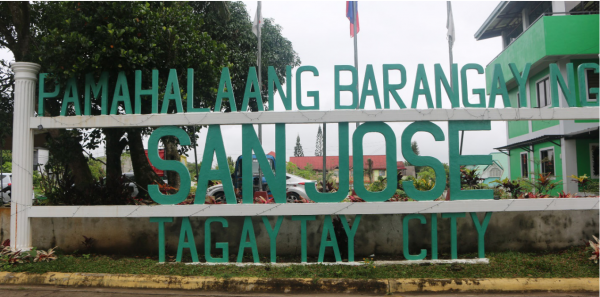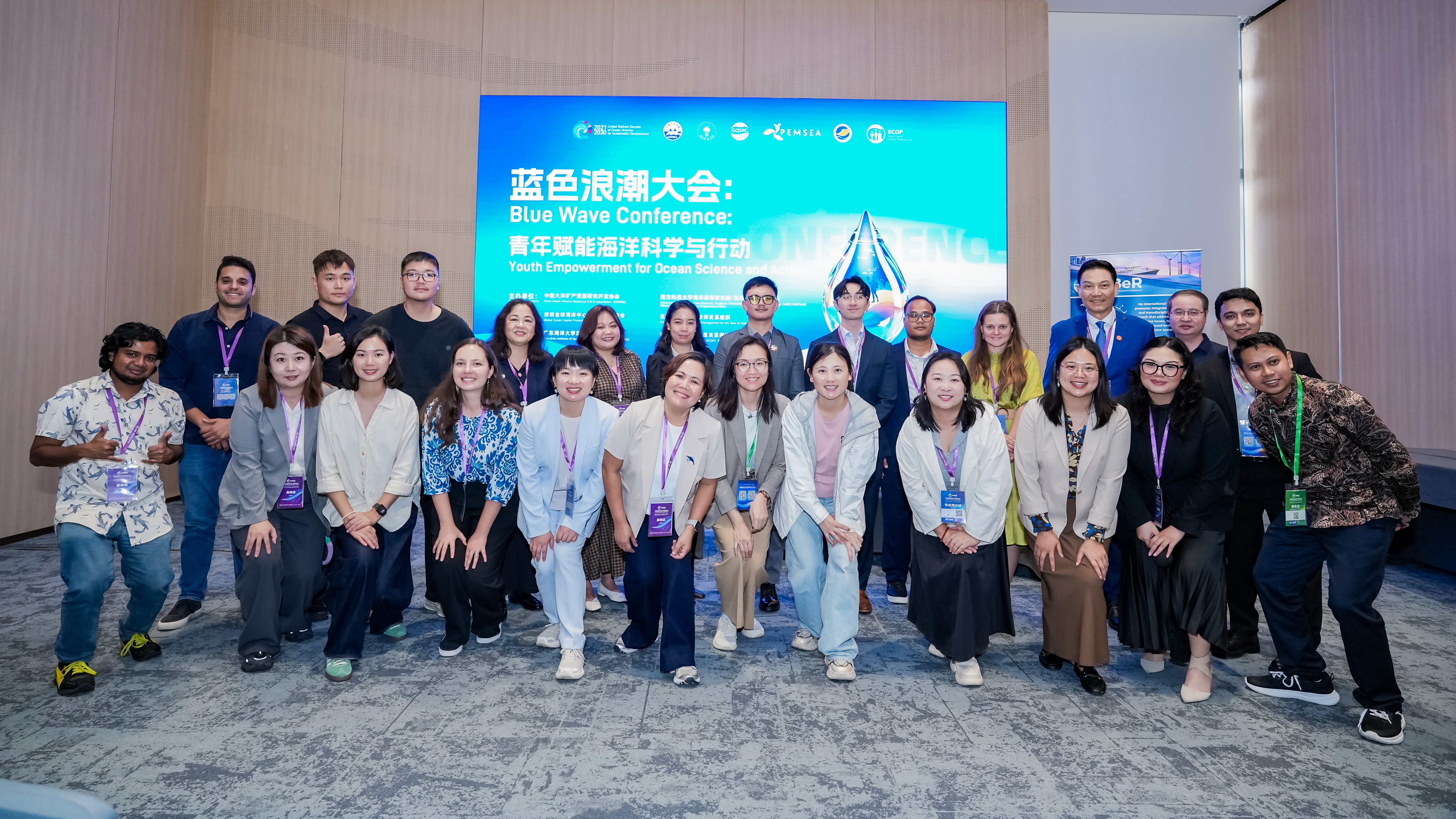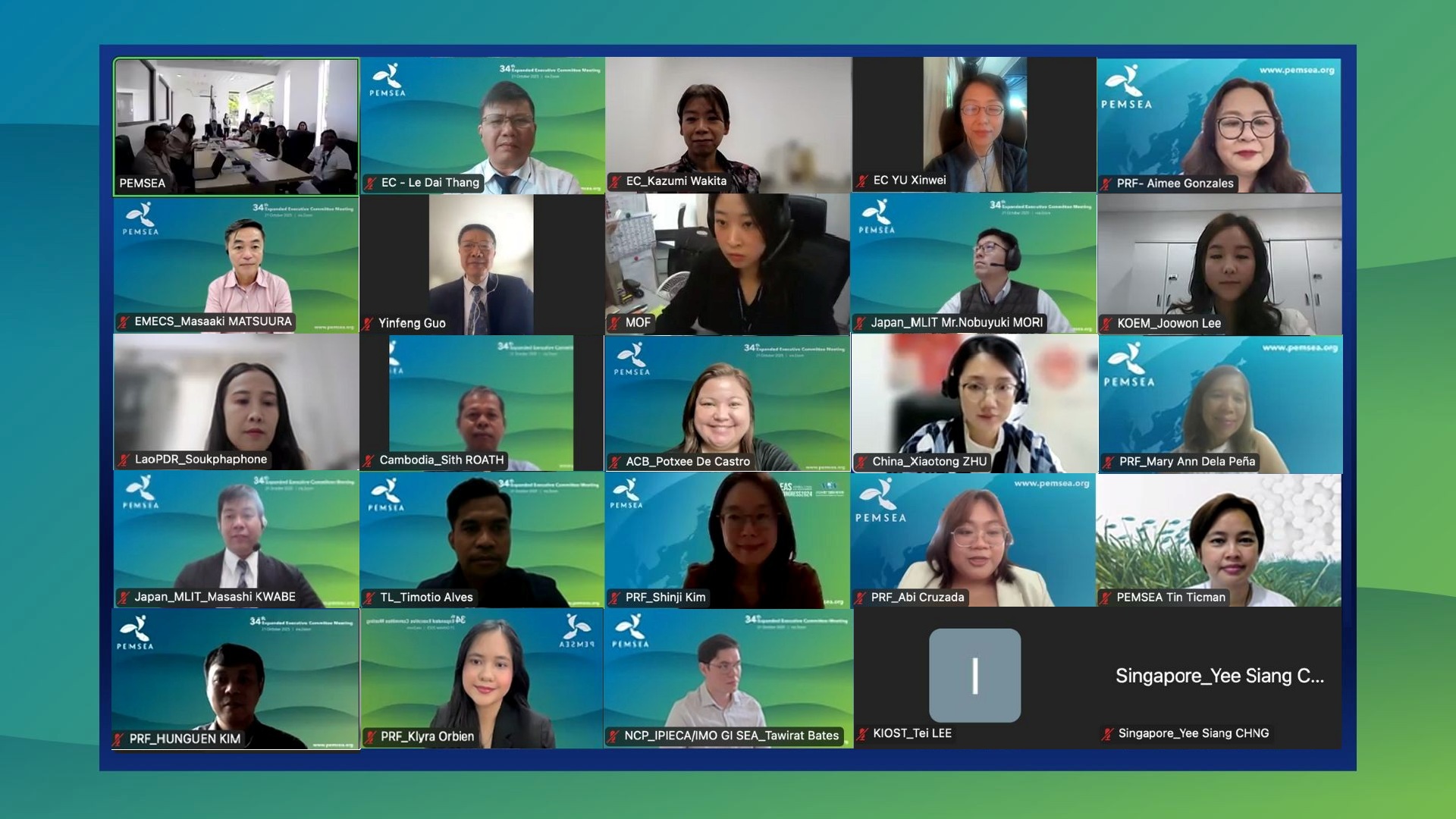Strong political commitment leads to efficient solid waste management
Friday, 21 April 2023

In Brgy. San Jose, Tagaytay City, dynamic local leaders lead the way in keeping the community clean and in helping people make extra money from their trash.
Tagaytay City in the Cavite highlands is one of the most popular tourist destinations closest to the Philippine capital city of Manila, thanks to its cool climate and the lovely views of Taal Volcano, a unique active volcano within a lake. With the explosion of tourism, property development, and commercial activity in what was once a predominantly agricultural area, however, have come many urban problems—traffic, depleted water supply, and the unavoidable garbage that accompanies human activity.
“On regular days, mga 6,000 yung population namin sa barangay, but sa weekend, minsan times five, dahil marami kaming transient na bahay at condos; bakasyunan kami at pinapasyalan ng mga tao” (On regular days, our barangay population is about 6,000, but on weekends, that’s multiplied by five, because we have many homes and condominiums for transients; we are a vacation spot, people visit), says Norelyn Parra, barangay captain of Brgy. San Jose in Tagaytay.
Fortunately, San Jose, one of 34 barangays in Tagaytay, has been managed strong and consistent enforcement and guidance from its local government leaders, making it a model community for solid waste management (SWM). Just last October, as part of the capacity building activities on solid waste management for the CocaCola Foundation Philippines, Inc.-funded project on Ecological Solid Waste Management in Cavite Province that is being implemented by Partnerships in Environmental Management for the Seas of East Asia (PEMSEA) in partnership with Caritas Diocese of Imus Foundation, Inc. and Cavite’s Provincial Government Environment and Natural Resources Office (PGENRO), a total of 56 provincial government representatives, barangay leaders and people’s organization members from the ESWM project sites in Cavite (i.e., Bucana, B. Pulido, San Rafael 3 and Banaybanay) visited San Jose as part of the Lakbay Aral (travel-study) program, an exposure trip to observe best practices and learn from the host barangay’s success in implementing its waste management programs.
 Attendees from neighboring barangays came to San Jose for the Lakbay Aral session.
Attendees from neighboring barangays came to San Jose for the Lakbay Aral session.
“People tell us, mayaman kasi kayo (you’re rich); I say, no, resourceful lang kami (we’re just resourceful),’ says Parra, who was sworn into office only last July. “Kailangan isipin mo kung paano magkakapera. Puntahan mo ang income-generating projects mo, kung hindi, mananatili kang walang pondo. (You have to think about how to raise money. You have to go where your income-generating projects are, or you’ll never have funds.) The barangay local government unit (LGU) doesn’t believe in just making do; in fact, even the pamphlets on SWM which they give away are nicely printed on thick, water-resistant paper, not cheap photocopies that are useless when wet. Otherwise, they won’t be taken seriously, Parra insists.

Barangay Captain Norelyn Parra explains how San Jose has taken its SWM programs to heart.
Credit where it’s due
The current dynamic, fast-talking LGU head gives credit where it’s due, however, and recounts how the work really began under the term of her predecessor, former Barangay Captain Jojit Desingaño, who has since been elected a Tagaytay City Councilor. By 2014, Republic Act 9003 (the Ecological Solid Waste Management Act of 2000) had been around for 14 years, and Cavite’s Provincial Ordinance No. 007-212, regulating the use of certain plastics, had been approved in 2012. “Matagal na ang mga batas, kulang lang ng pangil” (The laws have been there, they just lacked teeth), Parra says.
In 2014, Desingaño called a meeting to address some glaring issues—among them, that there was no proper handling of waste. “Araw-araw may koleksyon, pero lampas tao pa rin ang taas ng basura” (Everyday there was collection, but the mountain of trash was still taller than a person), Parra recalls. “At sa dami ng basura, bakit marami pang malnourished children sa barangay? Bakit marami pang walang trabaho, at maraming walang sariling toilet?” (And despite the volume of trash, why were there still a lot of malnourished children in the barangay? Why were there many who didn’t have jobs, and who didn’t have their own toilets?)
There were more questions, which the aforementioned pamphlet addressed: What is R.A. 9003 all about? What are the different types of garbage? Is it okay to throw food waste away together with the polyethylene terephthalate (PET) bottles and the soiled baby diapers? What is a materials recovery facility (MRF), and after segregation, where does the trash go? “Akala nila yung tinatapon, wala nang pakinabang” (They thought everything that got thrown away was useless), says Parra. “Kaya tinatanong namin sila: Ano yung mahirap? Ano yung hindi maintindihan? Pinakamahirap talaga yung awareness.” (That’s why we ask them: What is hard to do? What don’t you understand? Awareness is really the hardest part.)
 San Jose has its own operational materials recovery facility.
San Jose has its own operational materials recovery facility.
Desingaño pushed for regular meetings even at the purok (district) level in the barangay, and even though attendance was never 100 percent, barangay councilors like Parra (before she was elected barangay captain) would go to the people outside of work hours to ensure that they were available. Eventually, San Jose would form its own Barangay Solid Waste Management Council (BSWMC), for better accountability and decentralization of work.
In 2018, Caritas Imus, under its Social Action Commission, and in line with its advocacy of targeting vulnerable communities, reached out to San Jose; the community and its neighbors were in the line of fire, so to speak, whenever Taal Volcano became active. The volcano had spewed ash and lava a few times in recent years, most disastrously during a major eruption in January of 2020.
The LGU leadership welcomed the cooperation, Parra recalls. “Mahirap naman kung puro barangay lang, kailangan ng partners, dahil sila ang nagbibigay ng ibat-ibang oportunidad sa amin.” (It’s hard if it’s all just the barangay, we need partners, because they are the ones who give us different opportunities.)
Information, education and communication (IEC) remains important
Also providing support is the Provincial Government of Cavite. Like Parra, PGENRO Anabelle Cayabyab believes that awareness remains an issue, so information, education, and communication (IEC) for every barangay and municipal LGU remains a key strategy. “Many municipalities have focused on their garbage problem, so may mga pakulo sila pagdating sa plastic, like papalitan ng bigas, o ginagamit sa paggawa ng parol (so they have schemes when it comes to plastic, like exchanging it for rice, or using it to make Christmas lanterns).
“Some barangays like San Jose have good practices. It’s very important to coordinate with the LGU, because it’s the primary source of garbage, but sometimes there’s duplication and redundancy in projects. So we assess: What cannot be done at the LGU level, the province can do it, we meet halfway,” says Cayabyab. A big boost came in 2020 with the launch of the Ecological Solid Waste Management (ESWM) in Cavite Province (Plastic Wastes Recycling Project), funded with a grant from the Coca-Cola Foundation Philippines Inc.
Originally set to end in June 2021 but extended until December 2022, the project had as its objectives the diversion of solid waste generation in the province, as well as building capacity and awareness on SWM, promoting a circular economy, and identifying valuable lessons and best practices that could be replicated in other communities.
Five project sites were identified in Cavite province: Brgy. San Rafael, Noveleta; Brgy. B. Pulido, General Mariano Alvarez (GMA); Brgy. San Jose, Tagaytay; Brgy. Bucana, Ternate; and Brgy. Banaybanay, Amadeo.
The extension of the work until December 2022 was also due to the recalibration and adjustment of the ESWM project, which was approved by the Coca-Cola Foundation Philippines Inc. Data analytics were carried out, in the form of a plastic circularity audit, a community needs assessment (CNA), and a waste analysis and characterization study (WACS), for more appropriate, practical, and community-owned actions.
The WACS revealed much information about the SWM habits of the people of the five selected barangays. In San Jose, recyclables made up 65.5 percent of the total weight of collected garbage, with 29.23 percent of that amount being glass and 14.68 percent being plastics. Biodegradables came in next at 15.35 percent,12.70 being food and kitchen waste. Residuals for disposal followed at 9.71 percent, then residuals with potential for recycling at 6.69 percent. Across classifications, there was more recyclable glass (29.23 percent) than plastics (23.92 percent), with the latter consisting mainly of PET bottles at 8.13 percent and soiled plastic films at 5.82 percent.


Higher buying power means higher volume of wastes
The WACS study posited that San Jose’s population includes many higher-income earners, especially those with weekend homes, which explains why more recyclable waste is generated than biodegradables. Higher buying power leads to more food containers than food waste from home-cooked meals.
San Jose proceeded to implement more stringent rules. The “no segregation, no collection” directive was enforced. Days of collection for specific kinds of garbage were strictly assigned—biodegradables for two purok (districts in the barangay) only on Mondays, for instance, and recyclables only on Fridays—and non-compliance meant trash was returned to someone’s doorstep, so the household would learn to control and handle its own trash instead of scattering it on their threshold.
“Minsan sasabihin ng mga kamag-anak mismo ng kagawad, ‘Pati basura, pinakikialaman mo? Paano kung matalo ka sa susunod na eleksyon?’” (Sometimes it’s the relatives themselves of the councilor who will say, ‘You’re interfering even with the garbage? What if you lose in the next election?), Parra says. “Political will dapat. Pag maganda ang programa mo, hindi ka matatakot ipatupad ang tama. Magalit na ang magalit. Hindi puedeng may exempted sa batas.” (There should be political will. If a program is good, you won’t be afraid to do what’s right. Never mind who gets angry. Nobody can be exempted from the law.)
When San Jose was awarded by the Environmental Management Bureau (EMB) of the Department of Environment and Natural Resources with a P200,000 grant, each purok bought a second-hand eco-tricycle to transport waste. A kagawad (barangay councilor), a barangay health worker (BHW), and a driver often came along—not just for the ride, but for documentation: They list down who takes out their trash, weigh the trash, and check if a household took out more or less trash than the previous week. Such precise figures allow the LGU to study patterns and monitor if the good habits have indeed been ingrained in people. Heathy competition is encouraged, as the best performing purok in terms of SWM can receive year-end incentives.
 San Jose BENRO Orly Bayani shows off the charcoal briquettes made from dried leaves, plant twigs and other plant wastes.
San Jose BENRO Orly Bayani shows off the charcoal briquettes made from dried leaves, plant twigs and other plant wastes.
San Jose is also the first barangay to have its own Barangay Environment and Natural Resources Officer (BENRO), Orly Bayani, who also takes care of administrative matters. Thus, beyond the 8,000-square meter urban gardening site behind the barangay office, he shows off the bio-composter that turns biodegradable waste into fertilizer, shredders for biodegradable and plastic waste, a brick maker that compacts plastic into bricks that can be used for pavements and sidewalks, and a briquette maker for charcoal made from dried leaves, plant twigs, and other plant waste, and marketed by the barangay to restaurants.
 Materials are recycled into charcoal briquettes, bricks, and compost fertilizer
Materials are recycled into charcoal briquettes, bricks, and compost fertilizer
Eco-book

The eco-book is an easy way for people to keep track of ‘credits’ earned from garbage collection.
Another innovation is the barangay’s eco-book, a bankbook-cum-ledger for each household, where the kagawad can record any of the family’s accumulated “credits” for collected kilograms of plastic. These credits can then be exchanged at an eco-tindahan (eco-store) for rice, condiments like soy sauce, even children’s school supplies.
After a series of public consultations, San Jose also implemented a garbage collection fee of P20 a month. Although there were initial protests, the BSWMC was able to win over residents through sheer performance; the entire P20 goes to the purok, Parra says—for buying gasoline for their eco-tricycles, as well as brooms. “Para magtiwala ang mga tao sa iyo (So people will trust you), you have to be accountable,” says Parra. The receipts are attached for auditing, and barangay executives have a social media group chat for maximum transparency and reporting. In fact, the councilors don’t get their monthly honorarium until they submit their complete monthly reports.
While households pay only P20 for garbage collection, commercial enterprises pay more, with a minimum of P1,000 for a restaurant, as agreed upon in a Memorandum of Understanding between the LGU and the establishment. Massive multi-use complexes pay even more, often setting the fee themselves. The biggest contributor, Tagaytay Prime Residences, which includes outlets and several condominium units, turns over a whopping P60,000 a month—enough for the LGU to acquire a truck and hire a full-time eco-aide dedicated to helping sort the complex’s trash.
The proof, for San Jose, is in its people. Aside from the extra money made from selling recyclable materials, they have found livelihood opportunities like doormat making from old cloth, paper flower making, and cooking panocha (peanut brittle), peanut butter, and achara (pickled vegetables). In 2014, there were 10 malnourished children and 32 with stunted growth from poor nutrition living in San Jose; today, they’re down to zero malnourished and six stunted. Aside from the ESWM Project’s Lakbay Aral visit, San Jose now has a sister barangay in Alaminos, Laguna and was visited by LGU leaders from San Mateo, Laoag, all of whom came to observe how they managed their trash.
Does this make her proud? Of course, says the Kapitana. “Siempre, mangarap ka—pero hindi lamang para sa sarili mo.” (Of course, you should dream—but not just for yourself.)



